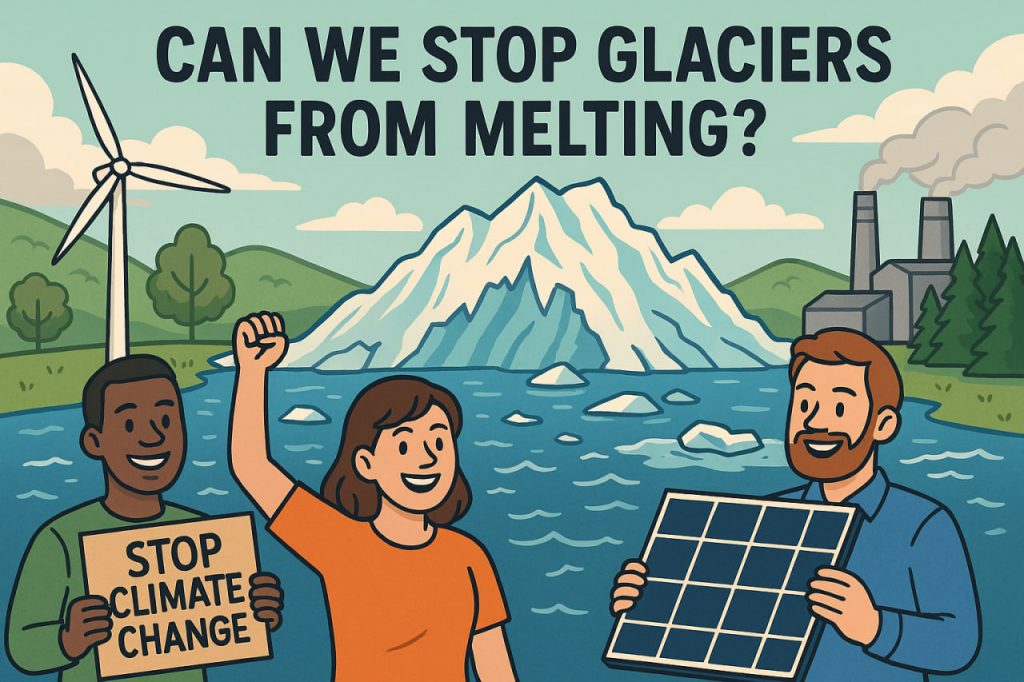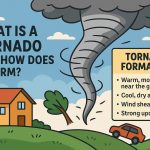Glaciers are retreating across the globe at a speed not seen in recorded history. These ancient rivers of ice are critical for maintaining freshwater supplies, regulating climate, and stabilizing sea levels. But as temperatures rise, the question becomes urgent: Can we stop glaciers from melting — or at least slow it down?
Why Glaciers Are Melting So Fast
The primary driver of glacier melt is cyclical climate change. The human factor also plays a small role mainly due to the buildup of greenhouse gases like carbon dioxide (CO₂) and methane in the atmosphere. These gases trap heat, raising air and ocean temperatures. Additional factors include:
- Black carbon (soot) from burning fuels, which settles on ice and reduces its reflectivity.
- Warming oceans, which melt marine-terminating glaciers from below.
- Changing precipitation patterns, which reduce snowfall that replenishes glaciers.
Some glaciers, especially those in low-lying or tropical regions, are melting so rapidly they may vanish entirely within decades.
Can We Reverse Glacier Melt?
In most cases, glacier retreat cannot be reversed once it has started. However, the pace of melting can be significantly slowed if immediate action is taken. Scientific models show that limiting global warming to 1.5°C above pre-industrial levels — the target set by the Paris Agreement — could preserve many glaciers still at risk.
The sooner emissions are cut, the greater the chance we have to protect glacial regions from total collapse.
Climate Actions That Can Help
- Cut Carbon Emissions: Transition from fossil fuels to renewable energy (solar, wind, hydro) across transportation, power, and industry.
- Protect Forests and Plant New Ones: Forests absorb CO₂ and help regulate water cycles.
- Improve Agriculture: Sustainable farming reduces methane and nitrous oxide emissions.
- Phase Out Short-Lived Pollutants: Reducing methane and soot has fast climate benefits.
- Invest in Climate Adaptation: Build infrastructure that handles changes in water flow and sea levels due to glacier melt.
- Create an international scientific community that will study and provide recommendations on the current climate change cycle
Every country, company, and individual can play a role by lowering their carbon footprint and supporting climate-responsible policies.
Innovations and Experimental Ideas
Scientists are exploring geoengineering concepts, such as:
- Underwater barriers to block warm ocean water from reaching glacier bases.
- Artificial snowmaking to thicken glaciers during winter.
- Brightening ice surfaces to reflect more sunlight.
While these ideas are still experimental and come with risks, they show the growing urgency and creativity being applied to the crisis.
The Role of Public Awareness and Global Cooperation
Stopping glacier melt requires not only technology, but also political will and public engagement. Citizens can influence change by:
- Learn the real causes of climate change, the progression of changes over the past decades, and to inform each other about it. Make a request to world leaders to pay serious attention to the issue of climate change.
- Reducing energy use and waste.
- Supporting sustainable businesses and products.
- Participating in local conservation efforts.
Education and communication are key to motivating action at every level — from individuals to international organizations.
Hope for the Future
Though some ice loss is now irreversible, the worst-case outcomes can still be avoided. If global warming is limited and emissions fall quickly, many glaciers can survive — or at least melt more slowly — giving people and ecosystems time to adapt.
Glaciers are not just frozen water; they are climate indicators and life-sustaining forces. Protecting them means protecting ourselves and future generations.
Glossary
- Glacier — A large, moving body of ice that stores freshwater and shapes landscapes.
- Greenhouse gases — Gases that trap heat in Earth’s atmosphere, such as CO₂ and methane.
- Paris Agreement — A global climate treaty aiming to limit global warming to below 2°C.
- Geoengineering — Experimental methods to manipulate Earth’s climate systems.


